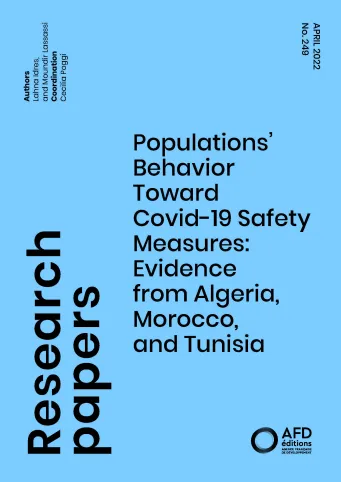Share the page
Populations' Behavior Toward Covid-19 Safety Measures: Evidence from Algeria, Morocco, and Tunisia
Published on

The present study aims to analyze the populations’ behavior toward COVID-19 safety measures in each of Algeria, Morocco, and Tunisia. In this direction, a particular focus is put on which safety measures are observed and which category of people is most likely to observe them. To answer these questions, household data provided by Economic Research Forum (ERF) rapid phone survey are used for both Morocco and Tunisia. However, the used data for Algeria are provided by a household survey conducted by the Research Center of Applied Economics for Development (CREAD). The obtained results show some similarities among the population’s behavior of these countries. In fact, in all these countries, women are those who mostly observe the safety measures. The educational level also plays a role in these populations’ behavior, nevertheless, its impact on these behaviors differs from a country to another. Moreover, an ordred probit model is estimated to identify the determinants of the observed safety measures intensity in each country. In this regard, it is shown that women and elderly mostly comply with the barrier methodes, nevertheless men and youth are those who use these measures more intesenvily. Furthermore, simulations results show that the percentage of Moroccans observing three safety measures converges to 80%, against 59% in Tunisia, and only 5% in Algeria.
Useful Information
-
Authors
-
Lahna IDRES, Moundir LASSASSI
-
Coordinators
-
Edition
-
249
-
Number of pages
-
50
-
ISSN
-
2492 - 2846
-
Collection
-
Research Papers
